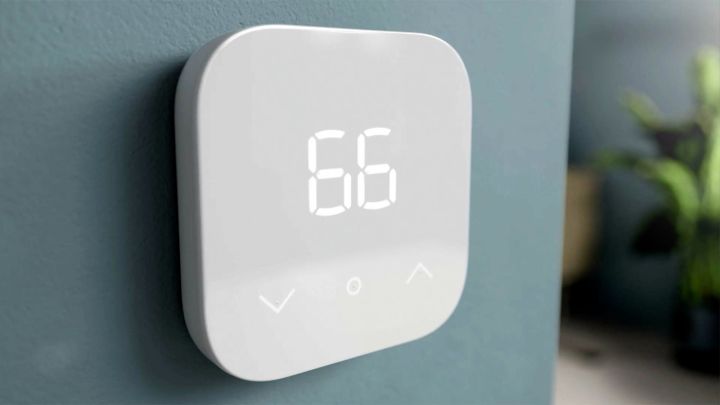One of the major selling points of a smart thermostat is its ability to make automatic adjustments to your home’s heating and cooling that can save you money on your electrical bill. How much you save exactly is up for debate, however. Let’s dig into the different factors that play into how much energy and money you save by using a smart thermostat.
Do smart thermostats save energy?

Yes, smart thermostats save energy. By using presence detection, smart thermostats can automatically build schedules for climate control based on when people are home. This feature often uses a smartphone app to determine your proximity to home and generates estimates of when you’re likely to be heading back or leaving. By reducing the amount of heating and cooling in the home when nobody is there, you can save energy, and in turn, save money on your heating bills.
How much energy can a smart thermostat save?
Estimates on energy savings vary, but 10% is a safe baseline. In the end, you’ll need to test your smart thermostat to see exactly how well it works for you.
How much energy you save from a smart thermostat varies widely based on local climate, home size, and occupancy. Energy Star says their certified smart thermostats save on average 8% on heating or cooling or $50/year on your bill. According to Nest, you can save 10% to 12% on heating and 15% on cooling using a smart thermostat. They say this can result in average savings of between $131 and $145 per year on your utility bills. Ecobee’s estimates reach up to 26% savings. Tado estimates earning up to 31% in savings.
These companies have a vested interest in impressive data results, however. The U.S. Department of Energy estimates you can save 10% on heating and cooling simply by dropping your thermostat’s demands from its typical setting by 7 degrees Fahrenheit to 10 degrees Fahrenheit for eight hours a day. That’s possible without a smart thermostat, though it certainly makes the shift easier.
How does a smart thermostat save electricity?
The main way smart thermostats save electricity is by reducing your heating and cooling automatically when it’s not needed. The device determines the need by predicting when people are home and away. Software algorithms can take the raw data of your comings and goings in order to build predictions over time, so climate control can kick in before you’re expected to arrive or leave.
Smart thermostats are able to factor in local weather in order to optimize heating schedules. These weather algorithms can reduce energy usage by 20%, according to data from Ecobee.
It’s worth noting that so long as a thermostat is programmable, you’re likely to be able to get equivalent results to a proper “smart” thermostat. However, smart thermostats shine based on their usability. If a thermostat is programmable but has an awful interface, you’re less likely to use it and enjoy energy savings. Conversely, you’re more likely to use a well-designed smart thermostat that does a lot of the work for you to create savings — even though it’s just as technically capable as a lower-end programmable thermostat.
What is the energy-saving mode on a thermostat?
Smart thermostats have an energy-saving mode that prioritizes electrical use over comfort. This produces more aggressive savings on your bill in the end. The nuances of these energy savings modes will vary by brand, but this mode can override previous schedules unless instructed otherwise. Usually, there are still minimum and maximum safety temperatures that will kick the thermostat into gear even when it’s in energy-saving mode.
If available, smart thermostats will take into account your provider’s time-of-use rates, so it will err toward heating or cooling during off-peak periods to enjoy lower electrical rates. Besides energy-saving mode, smart thermostats have plenty of other settings to tweak for an optimal experience.
Hopefully, this article provides a clearer picture of how much you can save with a smart thermostat. It can be challenging to nail down specific numbers with such a wide range of sample data, but after having your own installed for a few months, the impact should be clear.
Editors' Recommendations
- How to save Ring Doorbell video without a subscription
- How to use all Amazon Alexa alarm clock features
- How to reboot and factory reset a Roomba vacuum
- How to use the Google Home app on a computer
- The best smart light switch for Alexa, Google Home, and HomeKit




